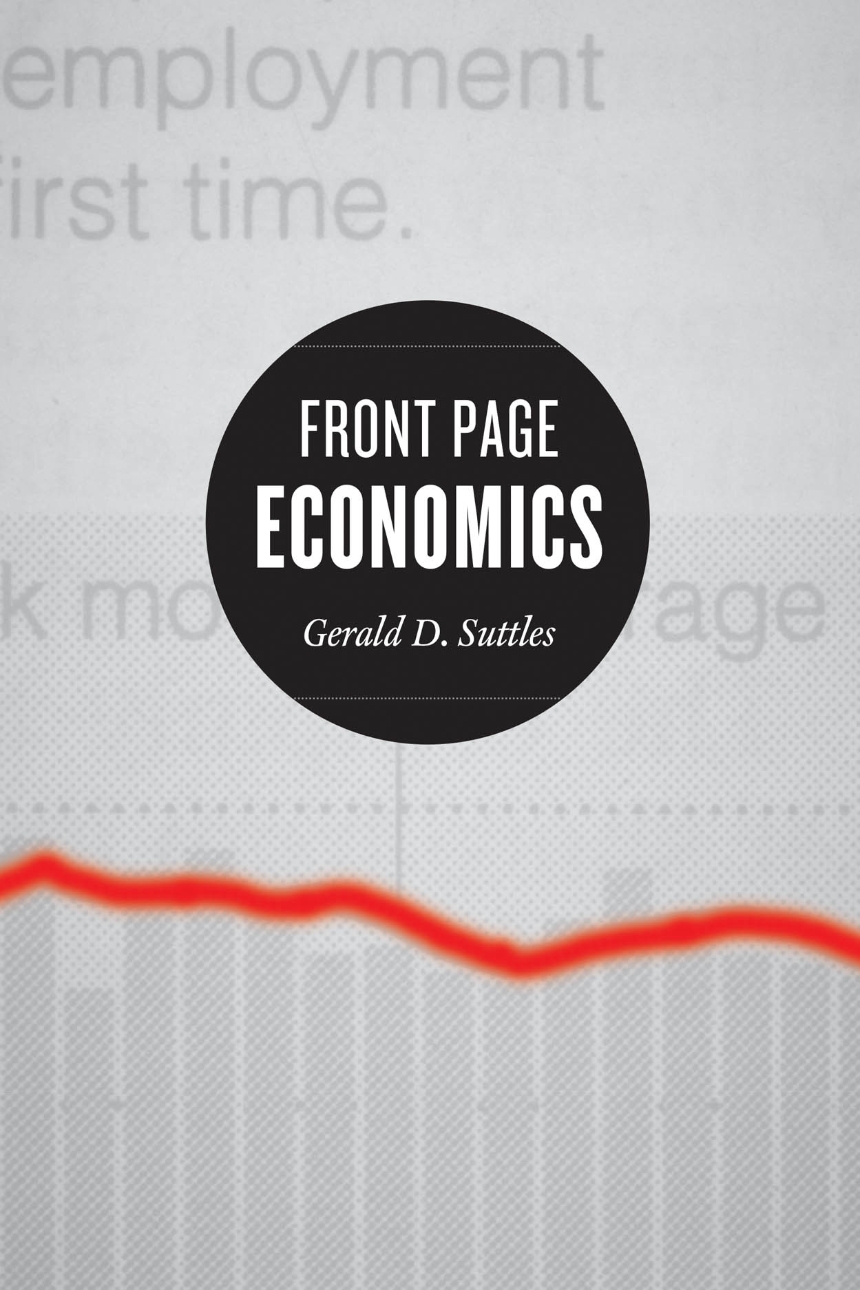Front Page Economics
In an age when pundits constantly decry overt political bias in the media, we have naturally become skeptical of the news. But the bluntness of such critiques masks the highly sophisticated ways in which the media frame important stories. In Front Page Economics, Gerald Suttles delves deep into the archives to examine coverage of two major economic crashes—in 1929 and 1987—in order to systematically break down the way newspapers normalize crises.
Poring over the articles generated by the crashes—as well as the people in them, the writers who wrote them, and the cartoons that ran alongside them—Suttles uncovers dramatic changes between the ways the first and second crashes were reported. In the intervening half-century, an entire new economic language had arisen and the practice of business journalism had been completely altered. Both of these transformations, Suttles demonstrates, allowed journalists to describe the 1987 crash in a vocabulary that was normal and familiar to readers, rendering it routine.
A subtle and probing look at how ideologies are packaged and transmitted to the casual newspaper reader, Front Page Economics brims with important insights that shed light on our own economically tumultuous times.
272 pages | 12 line drawings, 13 figures | 6 x 9 | © 2010
Economics and Business: Economics--History
Sociology: Occupations, Professions, Work
Reviews
Table of Contents
Acknowledgments
Chapter 1. The Daily Press and Our Collective Conscience
Chapter 2. The Grounding of the Economy
Part II. The Daily Dramatism of Economic News
Chapter 3. The Daily News as Figurative Narratives
Chapter 4. Personae and Their Purposes
Chapter 5. Wordscapes and Toonland
Part III. The Telling of the Great Crashes
Chapter 6. The Annual Business Cycle and Its Promoters
Chapter 7. The Voice of the People
Chapter 8. Congress and the Courts Have Their Say
Part IV. The Transformation of Ideology
Chapter 9. Normalizing the Economy: Popular Ideology and Social Regulation
Notes
Works Cited
Index
